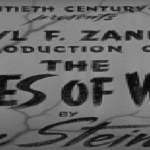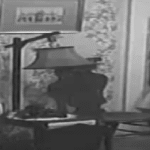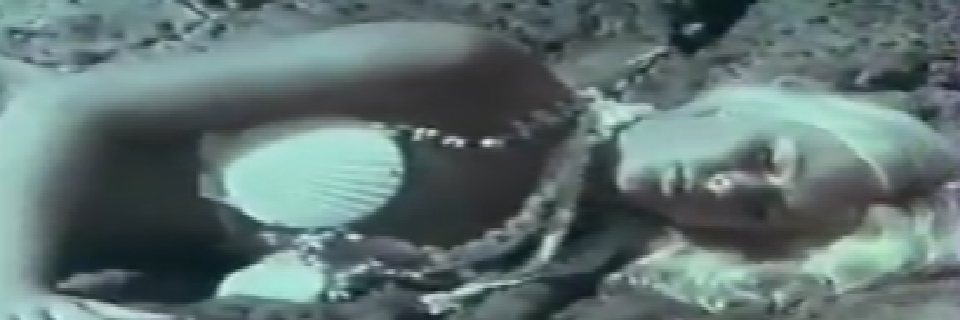Voyage to the Planet of Prehistoric Women, released in 1967, is a curious piece of cinematic history, blending American sci-fi ambitions with Soviet footage, a patchwork of storytelling that is both surreal and emblematic of its era. Directed by Peter Bogdanovich, although he was uncredited at the time, the film stands out as a peculiar reinterpretation of an earlier Soviet science fiction movie, overlaid with American narration and newly filmed scenes featuring American actresses. The final product feels like an odd but strangely compelling dream.
The film follows a group of astronauts on an expedition to the planet Venus, which has been depicted as a forbidding and volcanic world populated by prehistoric creatures and strange phenomena. The astronauts’ mission is one of exploration, but it quickly becomes a fight for survival as the team confronts both the dangerous landscape and its unexpected inhabitants. Central to the story is the ship Capella, sent on a rescue and reconnaissance mission after a previous expedition suffers a crash landing.
As the narrative unfolds, the audience is introduced to the surviving astronauts of the first mission, trapped and facing the perils of Venusian terrain. Volcanoes erupt without warning, and dinosaur-like beasts roam the planet, presenting a primal and hazardous environment. Alongside the natural dangers, the film introduces the haunting presence of a group of telepathic women, clad in seashell bras and living by the sea. These are the titular prehistoric women, whose existence seems steeped in ritual and mysticism. They worship a pterosaur-like creature as a divine being, and their serenity is disturbed when the astronauts kill the creature, believing it to be a threat.
The prehistoric women, led by a character named Moana, do not speak aloud but communicate with each other through telepathy, their thoughts conveyed to the audience via a soft and lyrical narration. Their way of life is serene and deeply connected to nature, yet their psychic bond gives them a collective awareness and a quiet power. When they sense the death of their sacred creature, they become vengeful, silently influencing the course of the astronauts’ journey through mental projection and psychic intervention. This conflict, though never directly confrontational, forms a significant undercurrent in the film.
Much of the movie’s structure relies on re-editing the 1962 Soviet film Planeta Bur, to which the American sequences are then awkwardly attached. The American scenes feature the prehistoric women, and they were shot later to give the film a more marketable and exotic appeal. The juxtaposition is visually jarring at times — the stark contrast between the Soviet astronauts’ adventures and the stylised, soft-focus scenes of the American actresses is quite noticeable — but it’s this strangeness that gives the film its cult status.
The astronauts continue their perilous journey, traversing lava fields, battling mechanical failures, and narrowly escaping monstrous creatures. Throughout their mission, they receive assistance from a robot named John, who becomes a somewhat tragic figure as he sacrifices himself to ensure the survival of the men. In a scene that is oddly poignant, the robot is caught in an eruption and destroyed, evoking a rare moment of emotion in a film that is otherwise visually driven rather than character focused.
The astronauts, oblivious to the presence of the prehistoric women, continue their mission with growing fatigue and uncertainty. Meanwhile, the women, ever-present but unseen by the men, continue their silent resistance. They perform rituals, summon storms, and attempt to use their psychic powers to thwart the invaders, who have desecrated their sacred space. Yet as the story progresses, an unspoken understanding seems to develop. The astronauts begin to sense that the planet holds secrets beyond their comprehension, and the women, in turn, begin to see the men not purely as destroyers, but as lost wanderers.
In the final moments of the film, as the astronauts prepare to leave the planet, one of them discovers a small idol resembling the creature they had killed. This leads to a reflective moment, suggesting that their presence has not gone unnoticed or unchallenged. There’s a subtle commentary here about colonisation and the imposition of human will upon alien worlds, although it remains understated, tucked beneath the film’s pulp science fiction trappings.
From a stylistic point of view, the film is a blend of the absurd and the poetic. Its low budget is evident, particularly in the special effects and the disjointed integration of different film stocks, but it is also a film that plays with mood and atmosphere more than plot logic. The scenes with the prehistoric women are almost mythological in tone, framed with slow, drifting camera work and voice-over that suggests timelessness and mystery. These segments contrast sharply with the rigid, often clunky dialogue of the astronauts and the stiff realism of the Soviet footage, but together they create a dreamlike texture that lingers beyond the film’s conclusion.
The use of music, too, contributes to this dual mood. The soundtrack oscillates between dramatic, science fiction cues during the action sequences, and a more ambient, ethereal soundscape during the scenes with the women. This reinforces the divide between the harsh, rational world of the male explorers and the intuitive, natural domain of the prehistoric women.
Voyage to the Planet of Prehistoric Women is not a film that can be judged by conventional standards of storytelling or cohesion. It is a product of creative resourcefulness, of making do with what was available, and repackaging it for an entirely different audience. In doing so, it creates a film that is not quite science fiction, not quite fantasy, and certainly not fully coherent, but it is, nonetheless, compelling in its own strange way.
In many respects, it serves as a relic of a time when filmmakers were experimenting with form and function, often without regard for traditional narrative structure. The film’s disjointed nature, its artificial blend of East and West, and its abstract themes of invasion, nature, and femininity, all coalesce into a work that is more interesting as a cultural artefact than a polished piece of cinema. Yet there is something undeniably memorable about its atmosphere, its visuals, and the haunting, silent figures of the women who dwell on the edge of a forgotten world.







